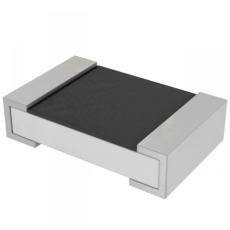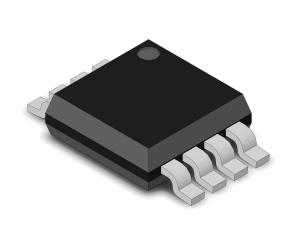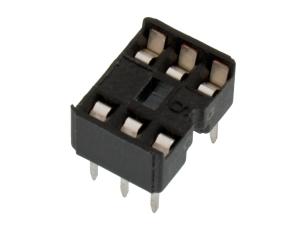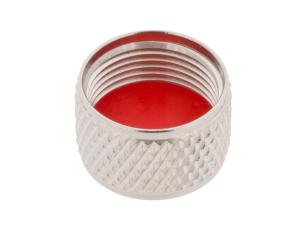Product description
The Tic T825 USB Multi-Interface Stepper Motor Controller makes basic control of a stepper motor easy, with quick configuration over USB using our free software. The controller supports six control interfaces: USB, TTL serial, I²C, analog voltage (potentiometer), quadrature encoder, and hobby radio control (RC). This version incorporates a TI DRV8825 driver, and male headers and terminal blocks are included but not soldered. It can operate from 8.5 V to 45 V and can deliver up to approximately 1.5 A per phase without a heat sink or forced air flow (or 2.5 A max with sufficient additional cooling).
The Tic family of stepper motor controllers makes it easy to add basic control of a bipolar stepper motor to a variety of projects. These versatile, general-purpose modules support six different control interfaces: USB for direct connection to a computer, TTL serial and I²C for use with a microcontroller, RC hobby servo pulses for use in an RC system, analog voltages for use with a potentiometer or analog joystick, and quadrature encoder for use with a rotary encoder dial. They also offer many settings that can be configured using our free configuration utility (for Windows, Linux, and macOS). This software simplifies initial setup of the device and allows for in-system testing and monitoring of the controller via USB (a micro-B USB cable is required to connect the Tic to a computer).
Features and specifications:
* Open-loop speed or position control of one bipolar stepper motor
* A variety of control interfaces:
* USB for direct connection to a computer
* TTL serial operating at 5 V for use with a microcontroller
* I²C for use with a microcontroller
* RC hobby servo pulses for use in an RC system
* Analog voltage for use with a potentiometer or analog joystick
* Quadrature encoder input for use with a rotary encoder dial, allowing full rotation without limits (not for position feedback)
* STEP/DIR inputs for compatibility with existing stepper motor control firmware
* Acceleration and deceleration limiting
* Maximum stepper speed: 50,000 steps per second
* Very slow speeds down to 1 step every 200 seconds (or 1 step every 1428 seconds with reduced resolution).
* Selectable microstep modes up to 1/32-step resolution
* Digitally adjustable current limit
* Optional safety controls to avoid unexpectedly powering the motor
* Input calibration (learning) and adjustable scaling degree for analog and RC signals
* 5 V regulator (no external logic voltage supply needed)
* Optional limit switch inputs with homing capabilities
* Optional kill switch inputs
* STEP/DIR outputs for controlling external stepper motor drivers
* Connects to a computer through USB via a USB A to Micro-B cable (not included)
* Free configuration software available for Windows, Linux, and macOS
* Arduino library makes it easy to get started using these controllers with an Arduino or compatible board
* Comprehensive user's guide
Control interface: USB; non-inverted TTL serial; I²C;
RC servo pulses; analog voltage; quadrature encoder
Minimum operating voltage: 8.5 V
Maximum operating voltage: 45 V2
Continuous current per phase: 1.5 A3
Maximum current per phase: 2.5 A4
Maximum step rate: 50000 PPS
Microstep resolutions: full, 1/2, 1/4, 1/8, 1/16, and 1/32
The Tic family of stepper motor controllers makes it easy to add basic control of a bipolar stepper motor to a variety of projects. These versatile, general-purpose modules support six different control interfaces: USB for direct connection to a computer, TTL serial and I²C for use with a microcontroller, RC hobby servo pulses for use in an RC system, analog voltages for use with a potentiometer or analog joystick, and quadrature encoder for use with a rotary encoder dial. They also offer many settings that can be configured using our free configuration utility (for Windows, Linux, and macOS). This software simplifies initial setup of the device and allows for in-system testing and monitoring of the controller via USB (a micro-B USB cable is required to connect the Tic to a computer).
Features and specifications:
* Open-loop speed or position control of one bipolar stepper motor
* A variety of control interfaces:
* USB for direct connection to a computer
* TTL serial operating at 5 V for use with a microcontroller
* I²C for use with a microcontroller
* RC hobby servo pulses for use in an RC system
* Analog voltage for use with a potentiometer or analog joystick
* Quadrature encoder input for use with a rotary encoder dial, allowing full rotation without limits (not for position feedback)
* STEP/DIR inputs for compatibility with existing stepper motor control firmware
* Acceleration and deceleration limiting
* Maximum stepper speed: 50,000 steps per second
* Very slow speeds down to 1 step every 200 seconds (or 1 step every 1428 seconds with reduced resolution).
* Selectable microstep modes up to 1/32-step resolution
* Digitally adjustable current limit
* Optional safety controls to avoid unexpectedly powering the motor
* Input calibration (learning) and adjustable scaling degree for analog and RC signals
* 5 V regulator (no external logic voltage supply needed)
* Optional limit switch inputs with homing capabilities
* Optional kill switch inputs
* STEP/DIR outputs for controlling external stepper motor drivers
* Connects to a computer through USB via a USB A to Micro-B cable (not included)
* Free configuration software available for Windows, Linux, and macOS
* Arduino library makes it easy to get started using these controllers with an Arduino or compatible board
* Comprehensive user's guide
Control interface: USB; non-inverted TTL serial; I²C;
RC servo pulses; analog voltage; quadrature encoder
Minimum operating voltage: 8.5 V
Maximum operating voltage: 45 V2
Continuous current per phase: 1.5 A3
Maximum current per phase: 2.5 A4
Maximum step rate: 50000 PPS
Microstep resolutions: full, 1/2, 1/4, 1/8, 1/16, and 1/32












